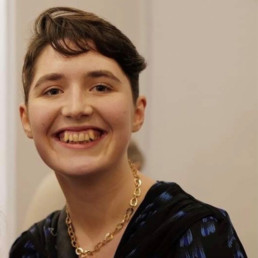
Written by Madeleine Spink
Madeleine completed a PGCE in Citizenship at the IOE after studying at the University of York and Goldsmiths. Madeleine now teaches Sociology, PSHCE, Oracy and History at Langley Park School for Girls in Bromley.
Diverse Educators: A Manifesto is edited by Hannah Wilson and Bennie Kara, with contributions from over 100 educators, structured around the Equality Act 2010.
It starts with a quote from Maya Angelou that “diversity makes for a rich tapestry, and we must understand that all the threads of the tapestry are equal in value no matter what their color.” The books format is best described as a tapestry. It is made up of ten chapters, one for each of the nine Protected Characteristics (Age; Disability; Gender Reassignment; Pregnancy and Maternity; Marriage and Civil Partnership; Race; Religion and Belief; Sex; Sexual Orientation) with a tenth chapter exploring intersectionality.
The book is collaboratively produced and mixes personal and professional experiences. Educators generously sharing their experiences and learning include primary and secondary teachers from all age groups, backgrounds and life experiences. The book develops the readers empathy to the diversity of educators, as well as the diversity of opinion of people within each protected characteristic. For example, the chapter on disability includes personal experience, the need for disability in RSE, practical tips to involve students in curriculum planning and data on the permanent exclusion rates for disabled students. It feature’s ACT’s own Lee Jerome on Intersectional Citizenship as a status, a feeling and a process. The chapter on Transgender inclusion is also insightful and talks about Lucy Meadows, whose death should not be forgotten by teachers who have followed her into the profession.
Deep questions are asked throughout, and the contributions informed my thinking about whose responsibility inclusion is, whose work it often ends up being and whether inclusion work is for the long term or ‘en vogue’. I would have loved to have seen a chapter talking about working class teachers existing in the middle class school environment, and how this identity intersects with the protected characteristics.
The variety of editing and writing styles did make the manifesto lack cohesion and feel inaccessible at times. The structure takes time to get used to, and can be navigated either by starting with the editors overview and selecting the sections that appeal to a particular interest, or by focussing on the key takeaways and ‘contributions’ to the manifesto at the end of each chapter. This changes depending on how the chapter has been edited, and some chapters are referenced while others lack referencing. It is a tapestry of a book, to capture such a variety of perspectives is a huge achievement, but not everything will appeal to everyone.
Diverse Educators is a book to dip in to, reference and use as a guide to practical steps that can be taken to inclusion. It would be a good choice for a staff book group and comes with a reading guide and questions. There’s a lot of ways this resource can be used and shape teaching, learning and the school environment.

